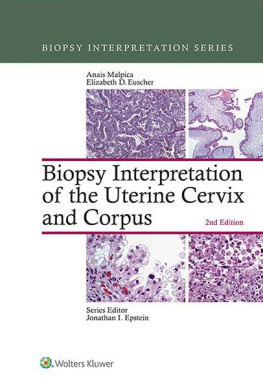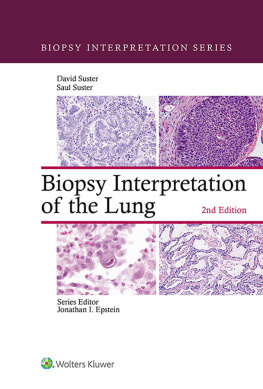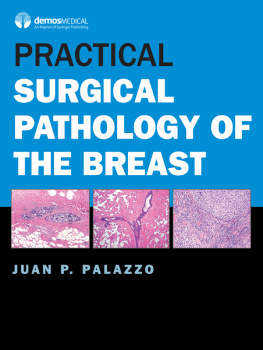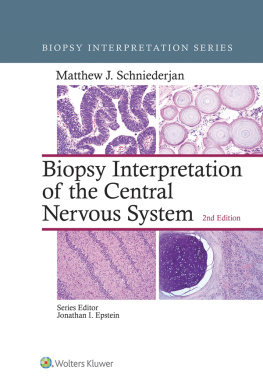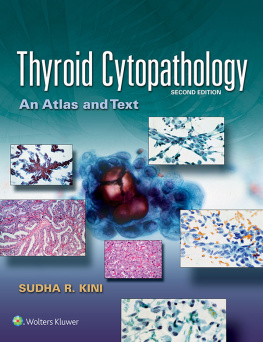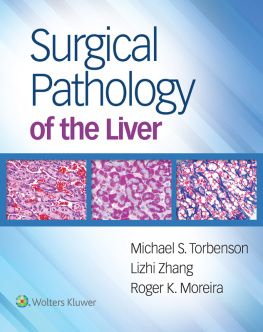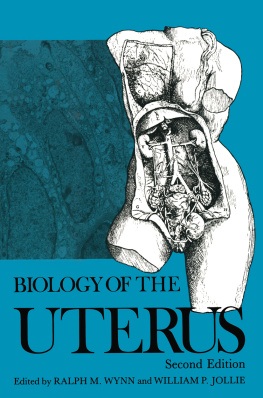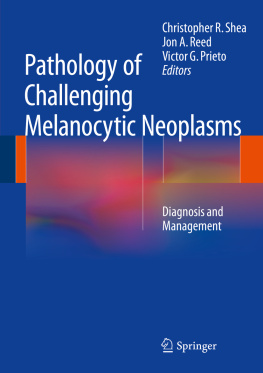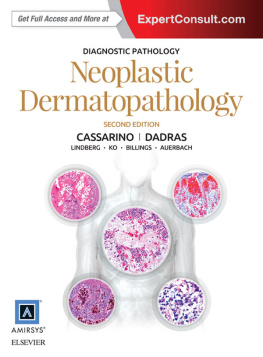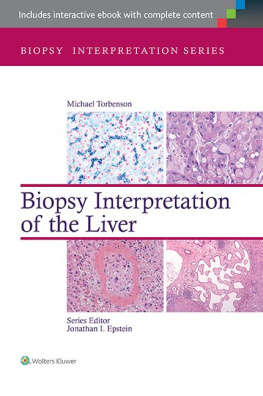BIOPSY INTERPRETATION SERIES
BIOPSY INTERPRETATION OF THE UTERINE CERVIX AND CORPUS
Second Edition

BIOPSY INTERPRETATION SERIES
BIOPSY INTERPRETATION OF THE UTERINE CERVIX AND CORPUS
Second Edition
Anais Malpica, MD
Professor
Department of Pathology
The University of Texas, MD Anderson Cancer Center
Houston, Texas
Elizabeth D. Euscher, MD
Associate Professor
Department of Pathology
The University of Texas, MD Anderson Cancer Center
Houston, Texas

Acquisitions Editor: Ryan Shaw
Product Development Editor: Kate Marshall
Senior Production Project Manager: Alicia Jackson
Manufacturing Coordinator: Beth Welsh
Marketing Manager: Dan Dressler
Director of Creative Services: Doug Smock
Production Service: Integra Software Services Pvt. Ltd.
Copyright 2015 Wolters Kluwer
First Edition, 2010 Lippincott Williams & Wilkins, a Wolters Kluwer business.
All rights reserved. This book is protected by copyright. No part of this book may be reproduced or transmitted in any form or by any means, including as photocopies or scanned-in or other electronic copies, or utilized by any information storage and retrieval system without written permission from the copyright owner, except for brief quotations embodied in critical articles and reviews. Materials appearing in this book prepared by individuals as part of their official duties as U.S. government employees are not covered by the above-mentioned copyright. To request permission, please contact Wolters Kluwer Health at Two Commerce Square, 2001 Market Street, Philadelphia, PA 19103, via email at (products and services).
9 8 7 6 5 4 3 2 1
Printed in China
Library of Congress Cataloging-in-Publication Data
Malpica, Anais, author.
Biopsy interpretation of the uterine cervix and corpus / Anais Malpica, Elizabeth D. Euscher. Second edition.
p. ; cm. (Biopsy interpretation series)
Includes bibliographical references and index.
ISBN 978-1-4511-9296-4 (alk. paper)
I. Euscher, Elizabeth, author. II. Title. III. Series: Biopsy interpretation series.
[DNLM: 1. Uterine Cervical Neoplasmspathology. 2. Biopsy. 3. Diagnosis, Differential.
4. Endometrial Hyperplasiapathology. 5. Endometrial Neoplasmspathology. WP 480]
RC280.U8
616.994660758dc23
2014040052
This work is provided as is, and the publisher disclaims any and all warranties, express or implied, including any warranties as to accuracy, comprehensiveness, or currency of the content of this work.
This work is no substitute for individual patient assessment based upon healthcare professionals examination of each patient and consideration of, among other things, age, weight, gender, current or prior medical conditions, medication history, laboratory data and other factors unique to the patient. The publisher does not provide medical advice or guidance and this work is merely a reference tool. Healthcare professionals, and not the publisher, are solely responsible for the use of this work including all medical judgments and for any resulting diagnosis and treatments.
Given continuous, rapid advances in medical science and health information, independent professional verification of medical diagnoses, indications, appropriate pharmaceutical selections and dosages, and treatment options should be made and healthcare professionals should consult a variety of sources. When prescribing medication, healthcare professionals are advised to consult the product information sheet (the manufacturers package insert) accompanying each drug to verify, among other things, conditions of use, warnings and side effects and identify any changes in dosage schedule or contraindications, particularly if the medication to be administered is new, infrequently used or has a narrow therapeutic range. To the maximum extent permitted under applicable law, no responsibility is assumed by the publisher for any injury and/or damage to persons or property, as a matter of products liability, negligence law or otherwise, or from any reference to or use by any person of this work.
LWW.com
PREFACE
Biopsy pathology may be particularly challenging due to the potential loss of architectural patterns and surrounding normal structures as well as artifactual changes naturally imparted during the process of obtaining the biopsy. This edition of Biopsy Interpretation of the Uterine Cervix and Corpus will provide the reader with a practical approach to the assessment of biopsy specimens from the uterine cervix and corpus. As understanding of pathology of the uterine cervix and corpus continues to evolve, so too has this edition, which includes updated references with respect to the latest research in the field of gynecologic pathology. This second edition includes a tenth chapter addressing metastatic carcinomas involving the uterus as well as the addition of numerous new e-figures. The 10 chapters in this book are organized by pathologic entity, with special sections dedicated to the findings in benign cervix and endometrium. The text focuses on the differential diagnosis and frequently encountered pitfalls of the most common entities observed in the cervix, endometrium, and myometrium. It is hoped that the numerous images in the e-figures, in addition to those contained in the text, will be useful to the reader during the evaluation of problematic biopsies from the uterus.
We are indebted to Ms. Kim-Anh Vu for her invaluable help with the images presented in this book. We warmly dedicate this book to our families, the LyosAndrew, Alexander, Nicholas, and Sebastianand the EuschersDavid, Kathryn, John, Alex, and Margaret, whose constant support and encouragement make our professional lives possible, and to our trainees and referring pathologists, whose challenging questions and comments have guided us in preparing this book.
TABLE OF CONTENTS
NORMAL UTERINE CERVIX
The uterine cervix comprises the lower portion of the uterus. It is a roughly cylindrical structure, which averages 2.5 to 3 cm in length and 2.5 to 3 cm in horizontal diameter in adults, and is divided into two portions, the portio vaginalis (vaginal) and the portio supravaginalis (supravaginal). These segments lie below and above the vaginal reflection, which is located at the junction of the middle and inferior thirds of the cervix ().
The outer surface of the portio vaginalis is the exocervix or ectocervix and is lined by squamous epithelium. The endocervical canal or anatomic endocervix is lined by columnar mucin-producing epithelium. The anatomic point at which the endocervical canal opens into the exocervix is the external os. In parous women, this opening is usually slit shaped, dividing the exocervix into anterior and posterior lips. The upper limit of the endocervical canal is the internal os, a funnel-like widening of the endocervical canal that has a gradual transition from endocervical epithelium into endometrium of the lower uterine segment. The junction of the exocervical squamous epithelium and the endocervical columnar epithelium is the squamocolumnar junction ().
The location of the squamocolumnar junction changes throughout a womans life. Before puberty, it is located at or near the external os. During adolescence, it moves outward due to the swelling of the stroma in response to hormonal stimulation, so endocervical mucosa covers part of the portio vaginalis. This ectopic endocervical mucosa, usually referred to as ectropion, appears red and ulcerated to the naked eye, and can be mistaken for an erosion. After menarchial ectropion occurs, there is a progressive replacement of the endocervical epithelium by squamous epithelium, or squamous metaplasia, throughout the reproductive years. The original squamocolumnar junction is the point at which the original exocervical squamous epithelium meets the endocervical glandular epithelium. However, a second squamocolumnar junction, the so-called functional squamocolumnar junction (also known as squamocolumnar junction when no modifier is used), develops due to the squamous metaplasia mentioned earlier ).
Next page
